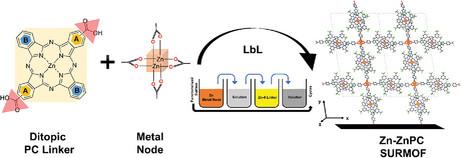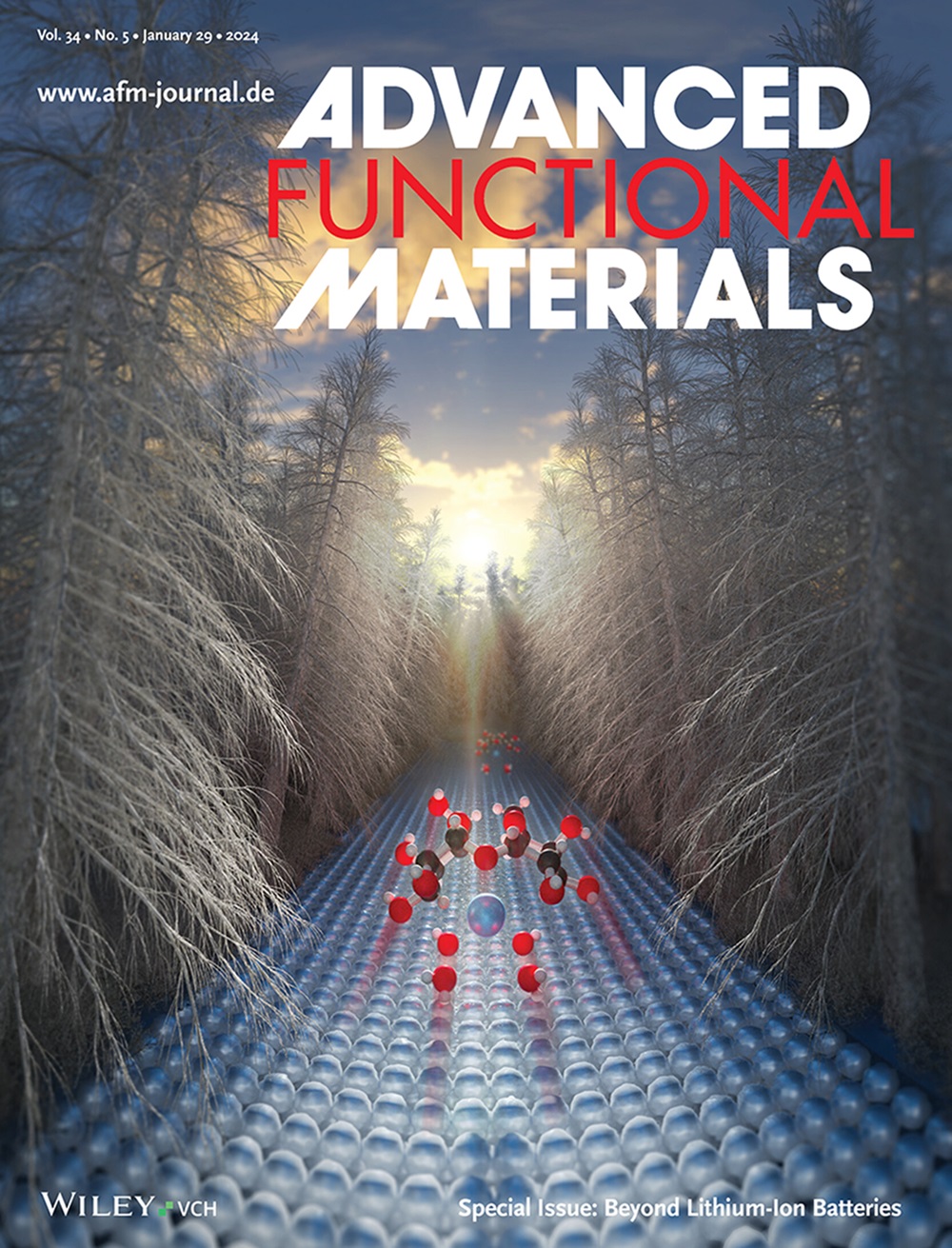Enhancing Optoelectronic Properties in Phthalocyanine-Based SURMOFs: Synthesis of ABAB Linkers by Avoiding Statistical Condensation with Tailored Building Blocks
IF 18.5
1区 材料科学
Q1 CHEMISTRY, MULTIDISCIPLINARY
引用次数: 0
Abstract
Phthalocyanine (PC)-based metal–organic frameworks (MOFs) hold substantial promise for applications in energy storage, sensing, and catalysis due to their robust stability and enhanced electron transfer capabilities. However, synthesizing phthalocyanine linkers with precise geometries presents a significant challenge, which limits their prevalence in the field. Traditional methods typically employ readily synthesized tetratopic PC linkers for realizing PC-based MOFs. In response, the study presents an innovative approach using ditopic ABAB-phthalocyanine MOF linkers. The A and B building blocks in PC synthesis are deliberately designed to circumvent issues of statistical condensation. These PC linkers are then utilized in the fabrication of zinc-based surface-anchored MOF (SURMOF) thin films. The structural and electronic properties of these SURMOFs are explored through a series of detailed experimental and computational methods, including X-ray diffraction, scanning electron microscopy (SEM), and density functional theory (DFT) calculations. UV–Vis spectroscopy reveals significant improvements in electronic absorption, thereby enhancing the material's performance in light harvesting and energy conversion. Furthermore, a photodetector built with this novel linker demonstrates high efficacy in the long-wavelength region (780 nm), highlighting its potential for cutting-edge sensing technologies.

求助全文
约1分钟内获得全文
求助全文
来源期刊

Advanced Functional Materials
工程技术-材料科学:综合
CiteScore
29.50
自引率
4.20%
发文量
2086
审稿时长
2.1 months
期刊介绍:
Firmly established as a top-tier materials science journal, Advanced Functional Materials reports breakthrough research in all aspects of materials science, including nanotechnology, chemistry, physics, and biology every week.
Advanced Functional Materials is known for its rapid and fair peer review, quality content, and high impact, making it the first choice of the international materials science community.
 求助内容:
求助内容: 应助结果提醒方式:
应助结果提醒方式:


